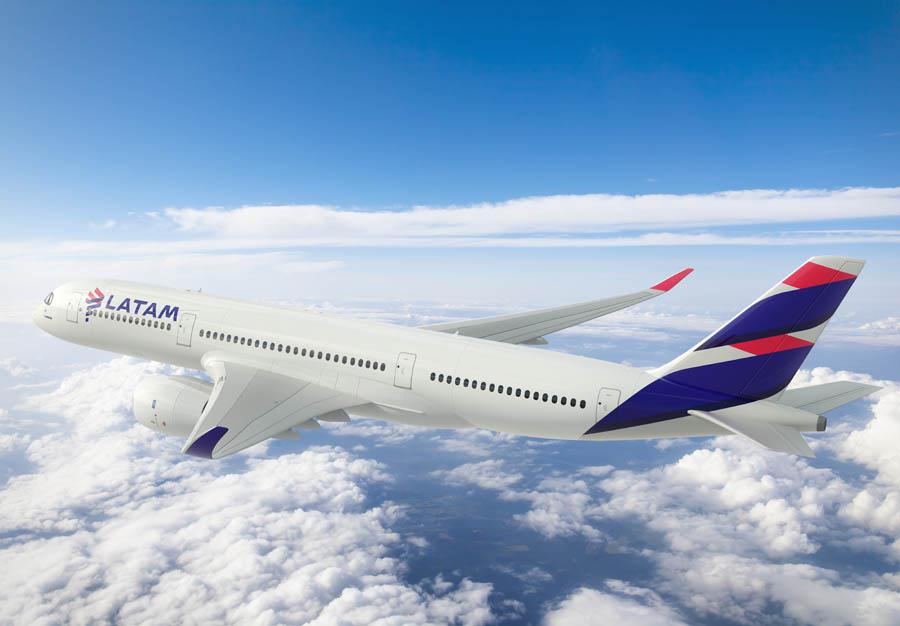
Air cargo carriers serving the China-Latin America trade lane remain confident about its long-term future, despite the fact that both markets have been presenting their own difficulties of late.
Although cargo between China and Latin America only accounts for approximately 5% of Air France-KLM-Martinair Cargo’s traffic, the carrier wasn’t immune to the effects of the slowing economies in China and much of Latin America. Because of that, and in light of general market weakness across the world, it has been scaling back its freighter operations. It now only has three Boeing 747-400ERFs and two 777Fs, as well as two McDonnell Douglas MD-11Fs that are scheduled to be retired by the summer.
“We have continued to adjust capacity to market needs in the frame of a ‘capacity-discipline policy,’ all the more as China’s export activity has also reduced a little these last few months,” says a spokesperson at Air France-KLM-Martinair Cargo. “Besides, there is so much global overcapacity that the offering of full freighters has quite logically been reduced, since there is so much passenger widebody palletized belly capacity already available that there isn’t, at least presently, as much need for full freighters compared to a few years earlier. Latin American economic activity has also contracted. For instance, the large – and at one time promising – market of Brazil is clearly less active now compared to a few years ago.”
IAG has done away with freighters altogether, but it is nevertheless committed to its Chinese and Latin American networks. British Airways increased its Shanghai frequency from daily to 10 a week in February 2016 and Iberia, which had planned to start flying to Shanghai from October 2016, has now brought the launch forward to June 28, 2016. The route is to be flown three times a week with an Airbus A330-200, and will be Iberia’s first Asian link, ahead of the launch of Tokyo in October.
“Across China we continue to focus on delivering the high level of service and network reach our clients demand,” says Rodrigo Casal, regional commercial manager of Latin America at IAG Cargo. “Our additional Shanghai capacity enables more of our customers to connect to over 350 destinations across our network in the most efficient way possible. We will continue to focus on delivering products that meet a clear customer need across China.”
British Airways has also been ramping up its capacity to Latin America. Having launched flights from Gatwick to the Costa Rican capital San Jose and the Peruvian capital Lima in recent months, it is also scheduled to launch its longest non-stop flight with a 787-9 from Heathrow to Santiago, Chile in January 2017.
“Our premium business will also remain a key driver for our business in Latin America,” says Casal. “Over the next year we will look to increase our share of perishable products such as fruit and fish from Chile. This will be facilitated by the fact that we will now be able to operate from Santiago directly into London Heathrow as well as our hub in Madrid.”
Cathay Pacific Cargo, which flies to both Guadalajara and Mexico City using Boeing 747-8Fs, will focus on developing its special-cargo traffic between China and Latin America, including mail, perishables and high-tech products, according to Mark Sutch, general manager of cargo sales and marketing at Cathay Pacific.
“With our five-times-weekly freighter service into Mexico, coupled with more extensive interline partnerships to serve South American markets, we have been seeing some good tonnage growth between China and Latin America in both directions in 2015,” he says.
The Latin American skies are now dominated by the LATAM Airlines Group, formed as a result of the merger of Chile’s LAN Airlines and Brazil’s TAM Airlines. In April 2016, the group brought the company’s cargo affiliates into a single division called LATAM Cargo.

“In 2015, LATAM transported approximately 6,000 tons from China to Latin America and close to 1,000 tons of seasonal exports from Latin America to China,” says Andrés Bianchi, senior VP of sales in North America & Asia at LATAM Cargo. “Our main priority now between Asia and Latin America is to strengthen our positioning and competitiveness in this market by improving our product, expanding our connectivity through enhanced interline agreements and improving our efficiency.”
In 2015, China’s GDP growth rate dropped to 6.9%, the first time in more than 20 years that it had gone below 7%. Exports decreased 2.8% compared to 2014 while imports decreased 14.1%. In the first quarter of 2016, exports fell by 9.6% year-on-year and imports dropped by 13.5%.
Meanwhile, Latin America has also suffered currency depreciations, political crises, falling consumer confidence and even an earthquake, leaving it with weakened and underperforming economies.
“Unfortunately, we do not foresee demand recovering significantly in the next 12 months as, at this time, these factors are not expected to improve sufficiently,” says Bianchi. “On the other hand, demand from Latin America into China may continue to grow as exporters in our region expand their product range and explore new markets.”
LATAM currently only has an offline presence in Asia, but Bianchi says that the carrier has no plans to change that in the short term.
“Our current focus is to strengthen our core network and add new O&Ds selectively,” he says. “However, we believe we have made improvements in developing a better network from and to Asia by working with key interline partners and we expect to continue expanding these relationships.”
But Sutch says that both China and Latin America are developing markets and that the downturn should not be acted upon as a long-term decline trend. To that end, Cathay is confident that these economies will regain ground in the longer term.
“Latin America is a growing market for Asia’s exports, and Asia is also a promising market for fresh produce from Latin America,” he says. “As such, there are a steady stream of opportunities for development. Given the right economics and business climate, we will definitely further consider introducing additional capacity to serve this market. Our commitment to develop the Latin American markets is also shown by the recent appointment of our GSAs in the region.”
Bianchi says that although the short term will be challenging, LATAM is optimistic about the future as the region has strong growth potential.
“Our plan is to weather the current crisis without losing sight of the key elements necessary to succeed in the longer term,” he says. “These include having an attractive value proposition, consolidating a robust network, maintaining an efficient cost base and keeping a world-class team.”
Similarly, IAG believes it is well placed to serve the two regions in the months and years ahead.
“While turbulence in the Chinese market has been well documented, specific commodities continue to grow and we are optimistic that as infrastructure continues to develop in the region, it will support the export growth,” Casal says. “With our continued expansion in the region, we are in a good position to support this important trade lane.”
By Jeffrey Lee
Asia Cargo News | Hong Kong




